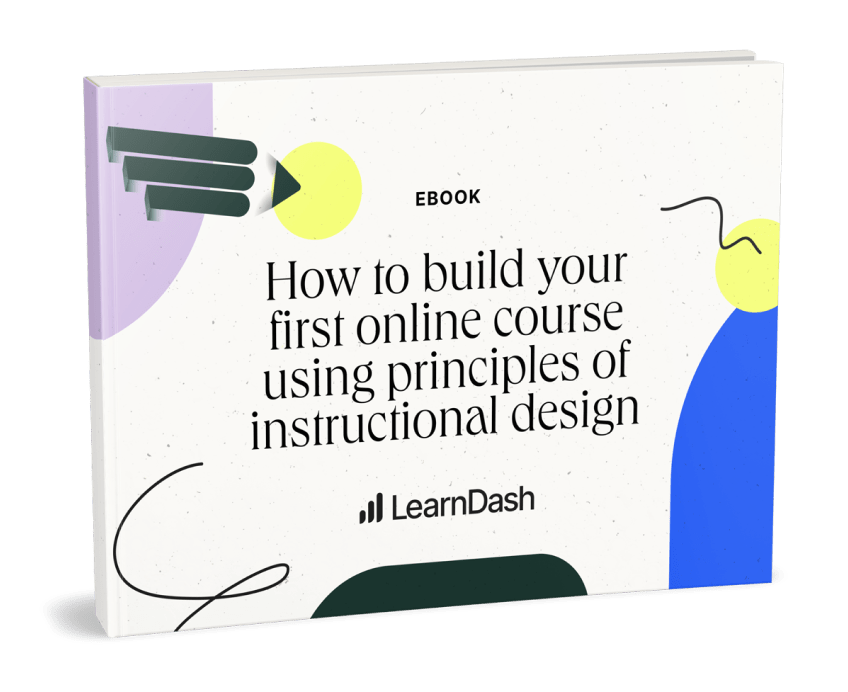
4 Ways Your LMS Can Help You Close Sales
The capabilities your LMS offers directly impact your course sales.
You may not think of your LMS as a sales tool. But, as the delivery platform for your product, it’s an inherent part of the value you offer your learners. After all, a good course isn’t just about what you teach, but how you deliver it. If you hear of a great new trend in online education, you will want to try it out and incorporate it into your course while it’s popular. If your LMS doesn’t support those capabilities, you may turn to one which can.
Of course, a good LMS doesn’t just increase the value of the course you offer; it also increases its overall visibility to potential learners. So, if you want your LMS to make your sales process easier, her are a few things you should keep an eye out for.
1. Your LMS is also a good CMS.
A CMS, for those of you unfamiliar with the lingo, is a Content Management System. Content doesn’t just belong in your course. On the contrary: content marketing is one of the most effective ways to grow your marketing audience and convert sales.
If you’re using a closed-source LMS on a hosted website builder, look to see what publishing tools you have. Will you be able to write a blog for your course, publish different content types, and use categories to organize your content? If not, then that’s a big strike against your LMS and its ability to help you land sales.
On the other hand, an open-source LMS like LearnDash, which runs on WordPress, not only offers all those content options, but also gives you access to thousands of plugins to expand your content publishing opportunities. And if you can’t find what you need, you have the freedom to work with a developer to design a custom solution.
2. You have control over your SEO and other analytics tracking.
SEO is another critical tool for growing your marketing base and reaching new audiences. Since so many learners turn to search engines to find new courses, you want to be able to optimize your course as much as possible to increase its chances of appearing in the top results.
Some closed-source platforms try to make this process easier on their subscribers by taking care of SEO on behalf of their learners. And probably in doing so they help their users get 80% of the way toward a well-optimized course website. But 80% isn’t fully optimized, and to get there you need deeper access than many closed-source platforms will allow.
You also want to pay attention to what analytics tools your LMS offers, either through the system itself, or via integrations with other analytics tracking programs. These analytics tools are how you understand user behavior on your site. Without them, you will struggle to learn which of your marketing and sales tactics are successful.
3. You can offer micro courses and other onboarding tools.
Offering a micro course create a low barrier-to-entry for learners who want to try out an online course from you without committing to a large program. They’re not only a great way for you to try new learning methods and test out potential course ideas, they’re also a popular with learners.
They’re not the only kind of onboarding tool for your course, though. What about short placement quizzes (“take our assessment quiz to learn what course level is right for you!”), a free introductory lesson? How much can your learners engage with the mechanics of taking an online course before they actually sign up?
Some learners will have taken many online courses, and may want to try out your course to see how it compares with other experiences. Others may be completely new to online education, and anxious to see how it works. Either way, a good LMS should be user-friendly enough to remove these hesitations. But your learners won’t know this until they can discover it for themselves.
4. You can take advantage of automated marketing features.
Closing more sales isn’t just about attracting new learners. In fact, your strongest market for potential new sales is with those learners who have already purchased a course from you. They’ve engaged with your brand, demonstrated a willingness to put money toward a course, and maybe even become willing participants in your community.
These learners are excellent candidates to re-engage with some well-placed email marketing. Automated marketing lets you set up reminders for your learners based on their activity. Maybe it’s been a few weeks since they logged in and you want to encourage them to pick up where they left off. Or perhaps they recently failed a test and you want them to give it another try. These emails can help raise completion rates, and in turn, learner satisfaction.
But emails can also alert learners to new courses, market new features, and promote new content. These, in turn, might prompt a learner to share your course with a friend.
Your course is your content. Your LMS is the interface.
There are any number of other ways your LMS indirectly contributes to your course sales. After all, a user interface that’s frustrating to use can undermine even the best content. And if you’re able to offer some feature-based learning methods, you can attract learners away from your competition.
After all, we’ve spent a lot of time talking about education tools like gamification and flipped classrooms. They’re effective teaching tools, and ones that attract many learners and make them eager to take a course. If your LMS doesn’t let you try these new teaching methods out, it’s putting you at a disadvantage.
Your online course won’t exist without the content you create for it. But your LMS is how you’ll show that content off, and deliver it in a way that helps your learners learn. Choose the LMS that helps you accomplish the most for your learners.

LearnDash Collaborator
@LearnDashLMS







